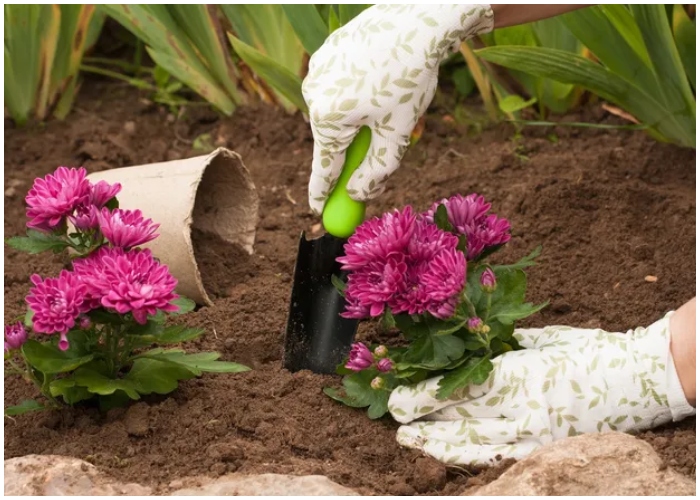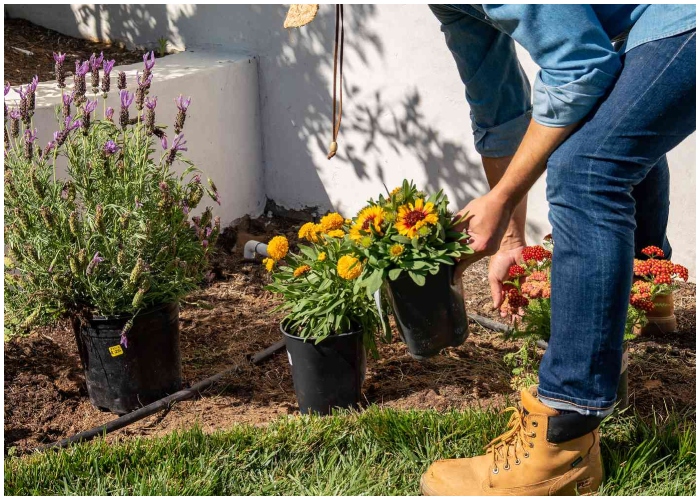Understanding how to properly space your annual and perennial flowers is crucial for maintaining plant health and ensuring optimal growth. Proper spacing can help prevent disease by ensuring adequate airflow and can also influence how quickly your garden reaches its full potential. Here’s a detailed guide on how to space both perennials and annuals in your garden beds.
Spacing Perennials for Healthy Growth
Perennials are plants that return year after year, growing larger or more prolific over time. They generally come with specific spacing instructions that are important to follow to prevent overcrowding, which can lead to disease and poor air circulation among the plants.

Here are some general guidelines for spacing perennial flowers:
Small Perennials: Space small perennials about 6 to 12 inches (15 to 30 cm) apart. This group includes smaller varieties that don’t take up much horizontal space in your garden.
Medium Perennials: These should be spaced approximately 12 to 18 inches (30 to 46 cm) apart. This size is typical for many common garden perennials that have a moderate growth pattern.
Large Perennials: Larger perennials need the most space, generally about 18 to 36 inches (46 to 91 cm) apart. These are the plants that will spread significantly and require more room to flourish without competing for nutrients and water.
Adhering to these spacing guidelines not only helps keep your plants healthy but also reduces the need for frequent dividing of your perennials, allowing them to establish themselves and thrive over time.
Annuals: Maximizing Beauty in a Single Season
Unlike perennials, annuals complete their life cycle in one growing season, which means they typically grow faster and can be planted closer together. While tight spacing is less of an issue with annuals, giving them enough room can still influence their health and aesthetic appeal.
Here are spacing recommendations for some popular annual flowers:
Begonias: Space begonia tubers 8 to 12 inches (20 to 30 cm) apart to allow enough room for their full development.
Cockscomb (Celosia): These should be planted about 8 inches (20 cm) apart, which helps maintain good plant health and display.
Cosmos: Provide at least 7 inches (18 cm) of space between cosmos plants for optimal growth and airflow.
Dahlia: Dahlias can grow quite large; spacing them 2 to 3 feet (0.6 to 0.9 meters) apart allows them to develop fully without competition.
Geraniums: Spacing for geraniums varies by type; zonal geraniums typically need about 12 inches (30 cm), whereas ivy geraniums require up to 36 inches (91 cm) of space.
Impatiens: These popular shade plants should be spaced 8 to 12 inches (20 to 30 cm) apart. Planting closer can encourage taller growth.
Lobelia: Very petite lobelia plants need just 4 to 6 inches (10 to 15 cm) between them.

Marigolds: Smaller marigold varieties should be 8 to 10 inches (20 to 25 cm) apart, with larger types needing up to 12 inches (30 cm).
Pansies: Space pansies 7 to 12 inches (18 to 30 cm) apart, slightly less if planting later in the season.
Petunias: Spacing for petunias varies; grandiflora varieties should be about 12 to 15 inches (30 to 38 cm) apart, while multiflora types can be closer, at 6 to 12 inches (15 to 30 cm).
Snapdragons: These should be spaced 6 to 10 inches (15 to 25 cm) apart depending on the variety.
Zinnias: Zinnias require varying spaces, anywhere from 4 to 24 inches (10 to 61 cm) apart, with rows spaced 24 inches (61 cm) apart.
For container planting, you can generally place annuals closer together than in garden beds, as the controlled environment allows for more flexibility.
Conclusion
Whether you’re planting perennials or annuals, proper spacing is key to creating a healthy, vibrant garden. By following these guidelines, you can ensure that each plant has the space it needs to thrive, leading to a more beautiful and sustainable garden environment. Remember, a little extra space can make a big difference in the overall health and beauty of your garden.